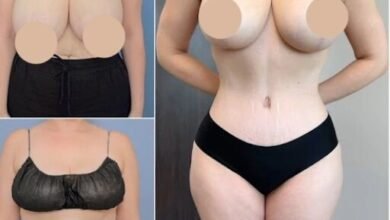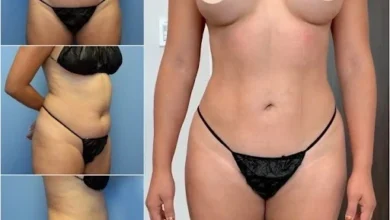What Are Jawline Fillers & How Do They Work?
What Are Jawline Fillers & How Do They Work?

In the realm of aesthetic enhancements, injectable fillers have emerged as a popular, non-surgical solution for achieving youthful and refreshed appearances. These innovative treatments address various concerns, such as fine lines, wrinkles, volume loss, and contour irregularities. But what exactly are injectable fillers, and how do they work? Let’s delve into the essentials of Jawline Fillers Injections in Dubai procedure, shedding light on their composition, applications, and benefits.
What Are Jawline Fillers?
Jawline Fillers, also known as dermal fillers or soft tissue fillers, are gel-like substances that are injected beneath the skin’s surface to restore lost volume, smooth wrinkles, and enhance facial contours. These fillers are composed of biocompatible materials that are safe for use in the human body.
Common Types of Injectable Fillers
- Hyaluronic Acid (HA) Fillers: Hyaluronic acid is a naturally occurring substance in the skin that helps retain moisture and elasticity. HA fillers are widely used for their versatility and ability to deliver natural-looking results.
- Calcium Hydroxylapatite (CaHA) Fillers: contain calcium-based microspheres suspended in a gel. They are often used for deeper lines and folds and can stimulate collagen production.
- Poly-L-Lactic Acid Fillers: This biodegradable synthetic material stimulates the body’s collagen production, making it ideal for addressing significant volume loss over time.
- Polymethylmethacrylate (PMMA) Fillers: PMMA fillers consist of tiny biocompatible microspheres suspended in a collagen-based gel. They provide long-lasting results and are often used for deep wrinkles.
- Fat Grafting: Also known as autologous fat injections, this technique uses the patient’s fat, harvested from another area of the body, to restore volume and contours.
How Do Jawline Fillers Injections Work?
Jawline Fillers work by adding volume and structure to specific areas of the face and body. The mechanism of action varies depending on the type of filler:
- Hyaluronic Acid Fillers: Bind with water molecules to plump and hydrate the skin.
- Collagen-Stimulating Fillers: Trigger the body’s natural collagen production, leading to long-term skin rejuvenation.
- Volume Replacement: Fillers like fat grafting or HA fillers directly replenish lost volume in hollowed or sagging areas.
Once injected, the fillers integrate with the skin’s natural tissues, delivering immediate improvements while also supporting ongoing skin health. Treatments are quick, minimally invasive, and often require little to no downtime.
Benefits of Jawline Fillers
Injectable fillers offer a myriad of benefits, making them a go-to choice for aesthetic treatments. Here are some key advantages:
- Non-Surgical Solution: Unlike traditional surgical procedures, injectable fillers require no incisions or anesthesia, reducing the risk and recovery time significantly.
- Immediate Results: Most fillers provide noticeable improvements immediately after the treatment, allowing patients to enjoy an enhanced appearance without delay.
- Customizable Treatments: Each filler type is designed to address specific concerns, allowing practitioners to tailor treatments to individual needs.
- Natural-Looking Enhancements: Modern fillers mimic natural substances found in the body, ensuring results that look and feel authentic.
- Stimulates Collagen Production: Some fillers encourage the body’s natural collagen synthesis, promoting long-term skin health and elasticity.
- Minimal Downtime: With quick procedures and minimal recovery periods, patients can often resume their daily activities shortly after treatment.
Popular Uses of Jawline Fillers
Injectable fillers can address a wide range of aesthetic concerns. Common applications include:
- Smoothing Wrinkles and Fine Lines: Fillers are ideal for treating static wrinkles, such as nasolabial folds, marionette lines, and crow’s feet.
- Restoring Volume: Age-related volume loss in areas like the cheeks, temples, and under the eyes can be effectively corrected with fillers.
- Enhancing Facial Features: Fillers can be used to sculpt and define facial features, such as the lips, jawline, and chin.
- Hand Rejuvenation: Fillers can also be used to restore volume and smooth wrinkles on the hands, a common sign of aging.
- Scar Improvement: Certain fillers can help improve the appearance of indented scars, such as those caused by acne.
The Procedure: What to Expect
The injectable filler procedure is relatively straightforward and typically completed within 30 to 60 minutes. Here’s what to expect:
- Consultation: A consultation with a qualified practitioner is the first step. During this session, the patient’s goals, medical history, and skin condition are evaluated.
- Preparation: The treatment area is cleaned, and a numbing cream or local anesthetic may be applied to enhance comfort.
- Injection: Using a fine needle or cannula, the filler is carefully injected into the target areas. The practitioner may massage the area to ensure even distribution.
- Post-Treatment Care: Patients are advised to avoid strenuous activities, excessive heat, and alcohol for 24 hours post-treatment. Mild swelling or bruising may occur but typically subsides within a few days.
Potential Risks and Side Effects
While injectable fillers are generally safe, potential risks include:
- Swelling and bruising
- Redness or tenderness at the injection site
- Allergic reactions (rare)
- Formation of lumps or unevenness
Choosing a qualified and experienced practitioner is essential to minimize these risks and ensure optimal results.
Longevity of Results
The duration of results depends on the type of filler used:
- Hyaluronic Acid Fillers: 6 to 18 months
- Calcium Hydroxylapatite Fillers: Up to 12 months
- Poly-L-Lactic Acid Fillers: Up to 2 years (with multiple treatments)
- PMMA Fillers: Permanent or semi-permanent
Periodic touch-ups can help maintain the desired effects.
Conclusion
Injectable fillers have revolutionized the field of cosmetic dermatology, offering a versatile, non-invasive solution for various aesthetic concerns. By understanding what fillers are, how they work, and their benefits, individuals can make informed decisions about incorporating these treatments into their beauty routines. Consulting with a qualified professional is key to achieving safe and satisfying results.



